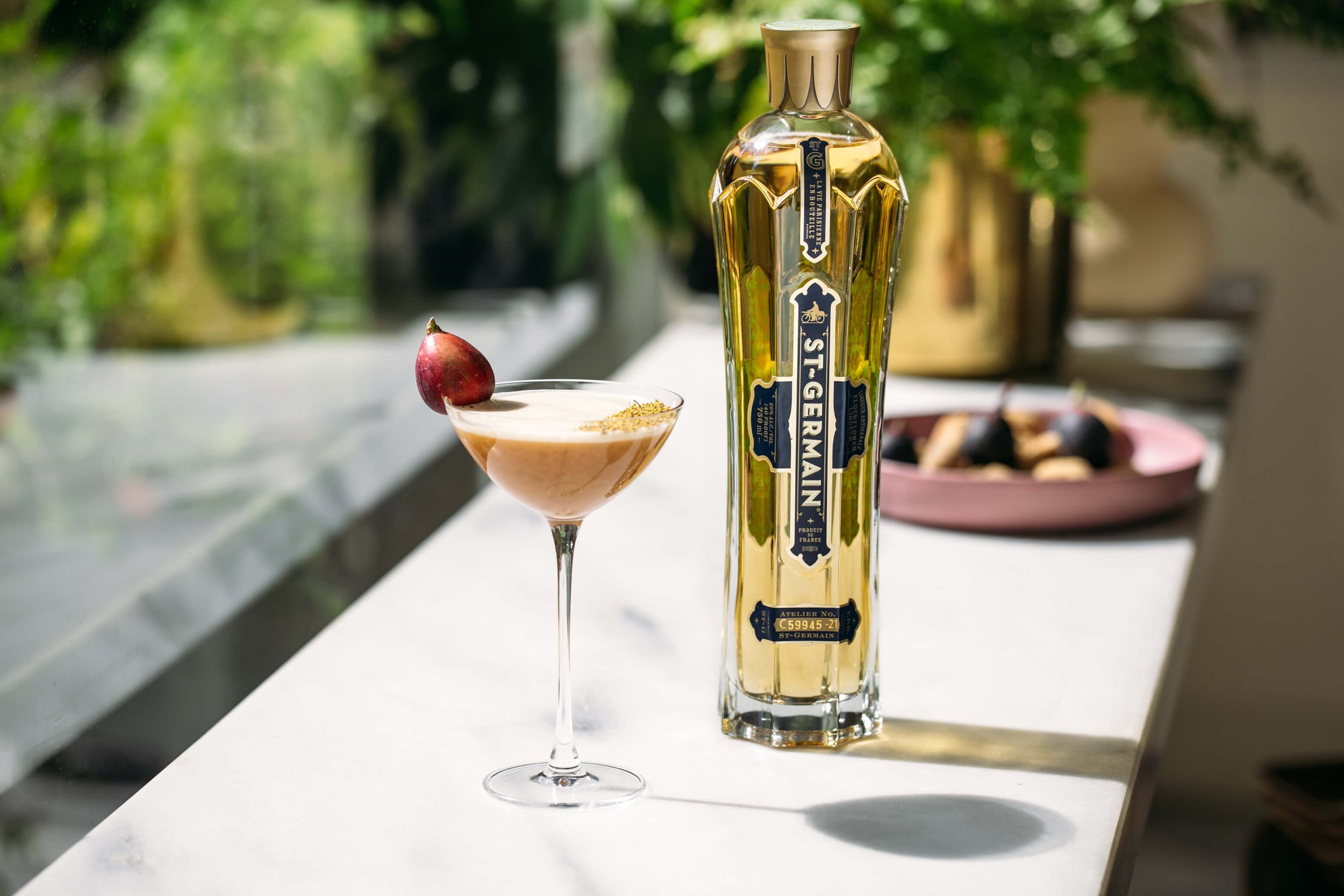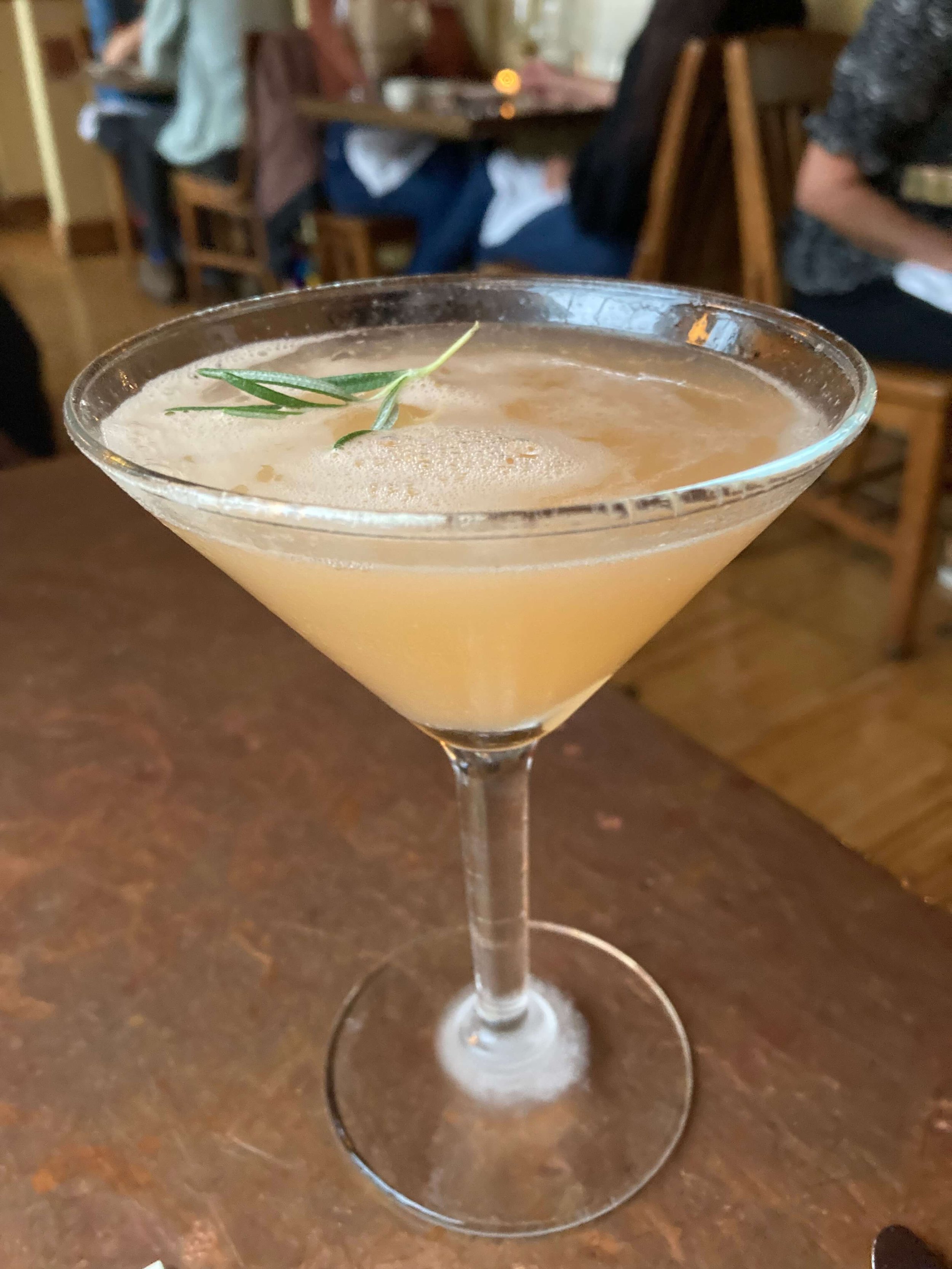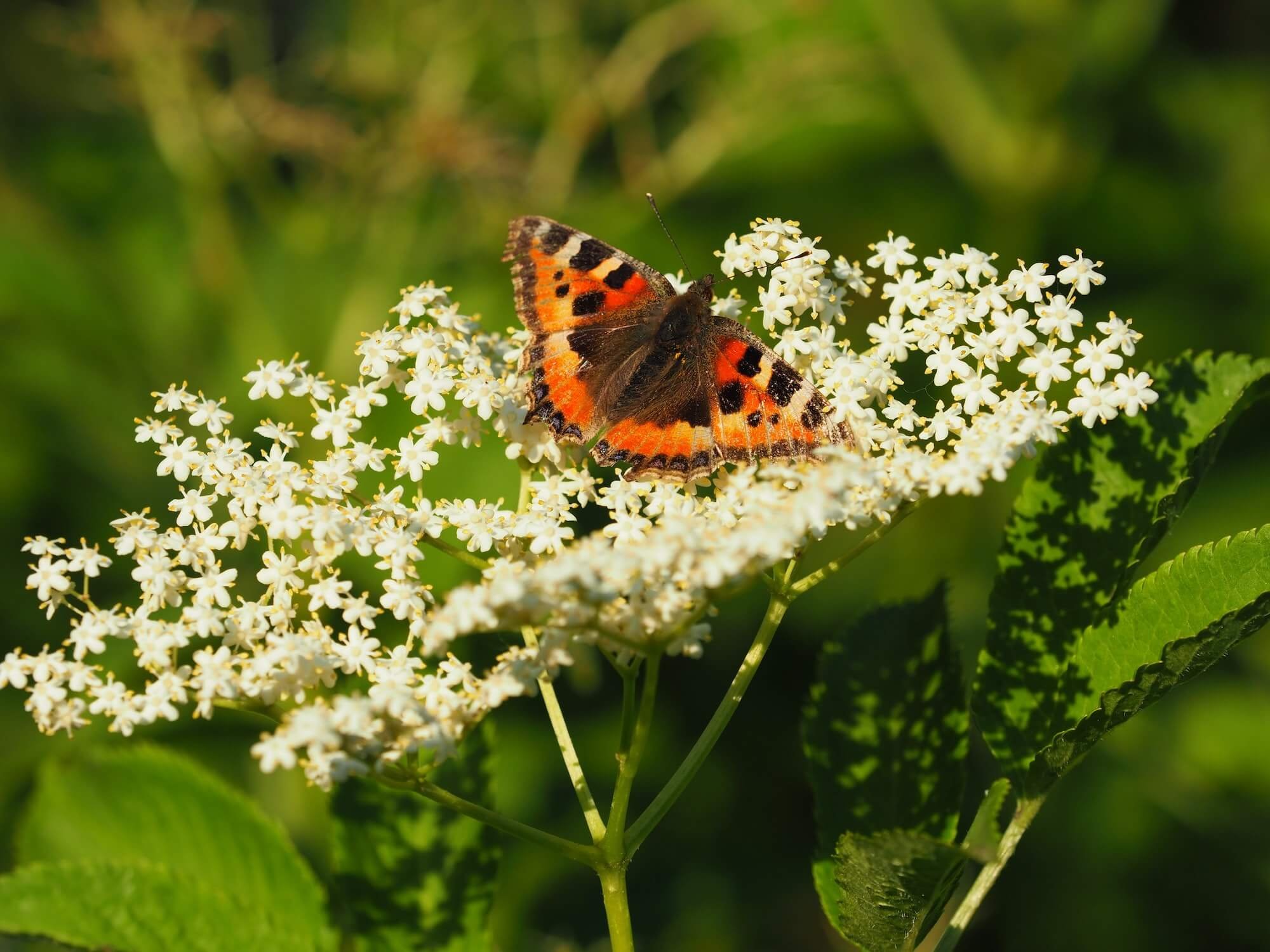Elderflower Liqueur is So Good It's Nicknamed the Bartender's Ketchup
St-Germain
In 2007, the sleepy world of liqueurs was jolted by the introduction of a new kind of liqueur, one created from the delicate white elderflowers grown in the foothills of the French Alps. This elixir, named St-Germain for the area of Paris that figured prominently in the French Art Deco and Belle Epoque periods, captured the almost elusively floral and fruity essence of the blossoms of the elder tree. The success of this new and original liqueur sparked a renewed interest in the category.
Elderflower blossoms
Where it comes from
Third generation distiller Rob Cooper, whose family owned the spirits company Charles Jacquin et Cie and had launched Chambord liqueur was inspired to create an elderflower liqueur after enjoying cocktails with elderflower syrup in London. Since its successful debut, attributed to the appealing flavor and smart marketing to bartenders, St-Germain (pronounced Sahn-jer-MAHN) has garnered numerous awards, invigorated cocktail menus, and spawned other brands, larger names like Bols, Giffard, Fiorente, and St. Elder, as well as small-batch craft versions, like that of Heimat New York.
There’s much to know about this unique, light gold-colored cordial, derived from the elderflower’s Sambucus Nigra species.
Heimat cocktail on the rocks. Photo courtesy Heimat New York
The Versatility of Elderflower Liqueur
Elderflower liqueur is “very approachable and has a very distinctive flavor, very floral, honeysuckle,” says Harry Kaufman, founder of Cocktail Legion, which offers specialized tasting classes, events, and bartending boxes for the home mixologist. He views elderflower as an excellent starting point for those discovering liqueurs and notes its versatility as it goes well with a base of vodka, gin, or tequila.
“You can use it in a lot of things,” Kaufman comments. “There's a good reason why people call it the ketchup of liqueurs. It's because you want to put ketchup on everything,” he says. While some may not consider that the most complimentary comment, Kaufman acknowledges elderflower “has this character that people say, ‘I want this.’”
He says elderflower’s popularity is connected to its easy drinkability and the continued marketing “juggernaut” (St-Germain was purchased by deep-pocketed BACARDI in 2013) which has led to bartenders putting it on their cocktail menus. Because of this, says Kaufman, elderflower liqueur sometimes has a reputation of being overused or ubiquitous.
Ute Londrigan, founder of artisan liqueur brand Heimat New York, released an elderflower flavor this past summer. She appreciates the flowery touch it adds to drinks. “It's more sophisticated,” she says.
Cousin Rosemary cocktail at Fore Street, Portland, Maine. Photo credit Liz Susman Karp
A little goes a long way
Cousin Rosemary, a cocktail composed of vodka, elderflower, grapefruit, and a sprig of rosemary, has been a consistent top seller at noted Portland, ME restaurant Fore Street for about six years, says Bar Coordinator Joe Watts. He’s also observed that elderflower has “gotten a lot of play” since St-Germain came on the market. Watts points out the importance of carefully balancing the sweetness of elderflower, which in the Cousin Rosemary, is accomplished by the acidity of the grapefruit. “It’s a matter of proportions,” he explains.
Kaufman concurs. With elderflower’s strong taste, pungent aroma, and sweetness, “a little goes a long way,” he says. For first-time drinkers, he’ll add a quarter of an ounce or a teaspoon to a gin, tequila, or whiskey like rye, put it in a spritz, or mix it with tonic. “That's a very refreshing alternative to an Aperol spritz with tonic water or using maybe Campari instead of Aperol. It's about finding that balance between the bitter and the sweet,” he comments. Kaufman recommends tasting a sweet and then a sour drink variation when trying elderflower.
How Elderflower Liqueur is Made
Some brands are created from an elderflower extract; others use the whole flower or include herbal infusions. Sugar levels vary; expect a long finish. Bartenders and home drinkers have a lot of leeway to get creative in developing recipes, says Kaufman, because elderflower is a floral botanical that pairs well with herbs and spices like thyme, basil, ginger, and even shiso leaf.
Legend has it that in years past, old men would gather the flowers and bicycle back to their villages with the prized blossoms, which must be handled gently because of their fragile nature. They bloom in early May through mid-June, but must be picked at their peak, which is only one or two days, and used immediately to preserve the sweet taste and pungent aroma.
Interestingly, purple-black elderberries, unlike the elderberry flower, have a very sour flavor. “It's the same bush, but it's not the same,” says Londrigan, who cautions that the timing is critical or else the flowers turn bitter. “It's a very interesting crop. And it's just an unbelievable flavor.”
Homemade elderflower liqueur
Homemade Elderflower Liqueur Recipe
If you have access to fresh or even dried elderflower, you can make your own elderflower liqueur.
30 fresh elderflower heads or 15 dried
750 ml vodka
2-3 fresh lemon slices
Sugar
Place the clean and dry flowers in a quart jar and then add the vodka, leaving one inch at the top of the jar. Place the lemon slices at the top of the jar to keep the flowers submerged. Cover and let infuse for 2-4 weeks.
Strain the liqueur and add sugar to taste.
Serve in cocktails or straight over ice.






